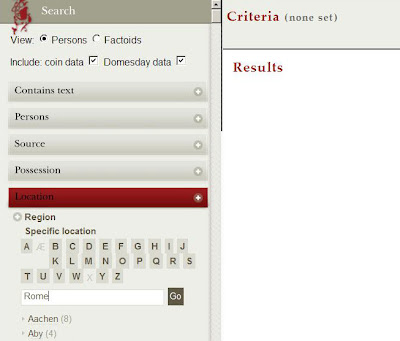I grandiloquently entitled the paper I wrote last spring term How Writers Write Biography: a Preliminary Study of British and American Practice. I wanted to get some idea about how much use biographers make of new technology and in particular at what stage (if at all) do they start tapping away at a computer keyboard.
You may well imagine that, in the brief time I had to research and write the paper, I found out little of significance. One point that did interest me, though, was that there seemed to be little correlation between writers' level of technical savviness and the point at which their wordprocessing begins: just because someone is computer literate does not necessarily mean that he will write his first draft on screen.
This also begs the question, what is a first draft? Does not a well-sequenced series of index cards, or a series of re-arranged pages from a reporter's notebook constitute a first draft? And what about Winston Churchill? He, famously, used not to see what he had dictated until it arrived on his desk in galley proofs, at which point only he would start revising. I used to run a typesetting company, and I shudder to think what his typesetting bills must have been.
Most of the desk research I did was based on the series of articles published in The Guardian from 2007 onwards entitled Writers' Rooms, which sometimes gave insights into the creative process, as well as describing where this principally takes place. Hilary Mantel for example wrote this:
Some preliminaries happen at the huge notice board in the kitchen, where I am building my new novel about Thomas Cromwell. It helps me structure a book if I can see what I'm doing. The chronological line and the flashbacks get worked out on postcards. As I narrow the focus, each postcard comes to represent a scene, and behind it I pin everything that belongs to it – tiny observations, descriptions, statistics, lines of dialogue. Then I can take it to the computer and work it through.
This seems to me to be a very good description of how many writers, and in particular biographers, work or would like to work. What particularly interested me, though, was the last sentence, which implied that what she did at this stage was to transposed all this material directly into her wordprocessor, using the cut and paste facility for fine tuning.
Such American research as I was able to do was by e-mail, writing to the high percentage of people who gave their contact details on The Biographer's Craft website: this was in marked (and dismal) contrast to the small percentage of people who give their e-mail addresses on the equivalent British sites. A respondent from Oregon was particularly helpful and insightful, writing this:
For me, the salient features of a good writing app are the ease of editing, cutting and pasting (which make it easier to try different versions of a story, see how it looks, then modify or return to the original); ease of access to tools like word count, thesaurus, dictionary, highlighting, footnoting etc); ease of style modifications (font, italics, boldface, et al), formatting (line spacing, justification, setting margins, etc); metadata, and combining words with images. I'd rather just have the rest of the features out of my way! Hence something intentionally simple like TextEdit and Bean and WriteRoom works best. I use Scrivener to make it easier to deal with several documents at once and to structure stories, then do final formatting in Bean, Pages or whatever.

This was the first time I had heard about Scrivener. I naturally looked up reviews for it, and was blown away by this:
No doubt, Scrivener is THE BEST creative writing software ever.
Completely customizable, you can write your novel, your script, you screenplay, your OWN WAY.
It has TONS of features, literally THOUSANDS of feature, I don't think one man can be aware of all of them, and that's why they're posting a "Tip of the Day" each and every day on their Facebook fan page.
In order for people to be aware of what MORE they can actually do with the piece of software they've bought!
Also, many writers have moved from Windows to OS X just to have Scrivener! It's like the Photoshop of creative writing, it's THE standard, it really defined and REDEFINED how things are, and how they should have been from the very beginning.
On the strength of this and other reviews, I went out and bought a nice big iMac to draft my thesis on The Double Life and Afterlife of a Virgin Martyr. It was only when I found the topic to be unsatisfactory and I switched to the prosopographical one Pre-Conquest Travellers to Rome that I hit a major problem: the version of MS Office for the iMac does not include the database program Access I used to use on my old PC and you can't of course practice prosopography these days without a database.
The cost-free solution would be for me to abandon Access and learn the free and open source database software MySQL (for structured query language): this, incidentally, is what the Anglo-Saxon prosopographical database runs on. However, I don't want to spend time on the MySQL learning curve and, above all, the Database for Historians course run by the Institute for Historical Research is focused on Access.
There are a couple of other solutions which I will investigate this week: watch this space!














